What type of plant is it?
Click on a plant image to select the type of plant you wish
use in your garden.
Trees
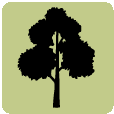
Palms
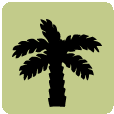
Shrubs

Vines & climbers

Herbaceous plants
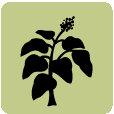
Ground
covers
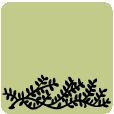
Grasses, or grass-like
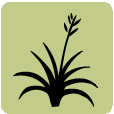
Trees
- Has single or multiple woody trunks and grow from 5-30
metres or over at maturity
- Single stem trees typically branch well above the
ground, while multiple stemmed trees typically branch close to
the ground
- Foliage is concentrated in the canopy allowing other
vegetation to grow underneath
- Has highly variable leaf and bark types.
Palms
- Vary widely in height
- Generally have a single woody trunk topped by fronds
- Many species retain dead fronds which can be flammable.
- Australian palm-like plants include tree-ferns,
screw-palms, cycads and grass-trees. They can grow several
metres tall and also have a 'skirt' of dead fronds or leaves
close to the ground. This is an important flammability
characteristic as it can act as a ladder fuel.
Shrubs
- Are shorter and generally more compact than trees,
typically 3-4 metres in height with branching close to the
ground
- Have dense, bushy foliage and woody stems
- Because of this structure, shrubs can carry fire from
the ground to the tree canopy.
Vines & climbers
- Have soft or woody stems and are climbing or scrambling
plants. Often grown over fences, pergolas or trellises and can
grow over other plants
- Can be deciduous or evergreen and some accumulate large
amounts of dead leaves
- Can act as ladder fuel and carry flames up into shrubs,
trees or supporting structures
- Examples include grapes, Virginia Creeper, Coral-pea,
Running Postman or Happy Wanderer.
NOT FIREWISE
These plants should not be planted in a garden or used
when landscaping for bushfire.
Herbaceous plants
- Have soft and fleshy leaves with non-woody stems
- Are low-growing, often less than 50cm tall
- Include most smaller flowering plants grown in gardens.
Can look 'shrubby', form clumps or grow as groundcovers
- Moisture content is usually higher than most woody
shrubs. Often droop when dry.
- Examples include violets and pansies.
Groundcovers
- Are woody or herbaceous. Woody groundcovers spread
without climbing
- Are generally less than 50cm tall.
Grasses, or grass-like
- Leaves are usually long, fine or strappy
- Vary from a few centimetres to over 2 metres tall.
Clump size can be up to 1 m in diameter
- Most grasses grown in gardens are perennial rather than
annual Many of these form clumps called tussocks. Examples
include Wallaby Grass and Canary Grass
- Perennial tussock grasses accumulate dead material
mixed with the living leaves and are quite flammable, although
they usually only burn for a short time
- Other grasses grow as a continuous mat such as lawn
grasses
- Leaves of grass-like plants are often coarse and thick
and may accumulate dead leaves in the living clump. Examples
include Mat-rush, New Zealand Flax, Iris and Gladioli.